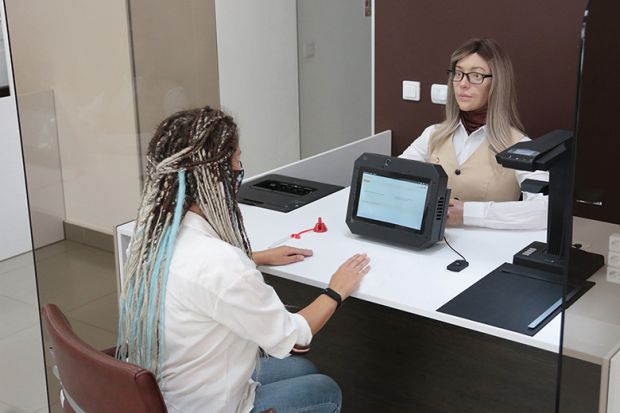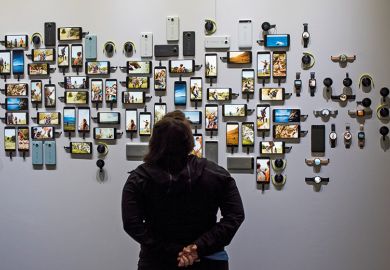Given that the relationship between staff and students is so integral to higher education, it might seem strange to delegate any of it to a robot. However, universities are increasingly finding that using artificial intelligence devices known as chatbots can help that relationship by supplying vital information to students, assisting their learning and freeing up staff to provide the best teaching to their cohort.
In this era of ever-increasing online interaction, it is important that institutions use such tools, and that they use them in the right way, said William Confalonieri, chief digital officer at Australia’s Deakin University, adding that the future of education is “one of personalised learning and services, supported with modern tools”.
“The only way of achieving that learning intimacy at massive scale is through powerful digital engagement that responds to the needs of a new generation of students,” he explained. “An artificial-intelligence-enabled personalised digital assistant can proactively engage with students via a conversational user interface, guiding them through study and life at university.”
THE Campus resource: Top tips for selecting and implementing new technologies
To this end, Deakin developed its own in-house chatbot, Genie. Not only does it provide information, such as timely prompts about deadlines or what the student should be preparing for, it also learns about their preferences and academic progress. This ensures that the information it shares and the way that it engages work for students as individuals.
“Genie’s intelligent engine helps students be more efficient by helping them get the most from their learning materials, study resources and Deakin’s network of study support services and systems,” Mr Confalonieri said.
It also makes sure students stay engaged with peers and university service providers, he said. For example, Genie’s cues trigger students to connect with support staff and teachers where human engagement is important.
Agnes Kukulska-Hulme, professor of learning technology and communication at the UK’s Open University, agreed that the benefits of chatbots can range from being “a very simple way to give students another route for their questions to be answered quickly” to offering more sophisticated support to individual learning.
Chatbots are evolving so they better understand language and expressions, and they can be used to support student well-being, she added.
Professor Kukulska-Hulme is a co-author of the annual Innovating Pedagogy report, which this year identified chatbots as a high-impact education trend and in which she highlighted how researchers from the Advanced Innovation Centre for Future Education (AICFE) at Beijing Normal University found that a chatbot could be used in “moral education”.
For example, when a learner expressed negative emotions, the bot could diagnose the cause by chatting and assess whether the learner had experienced unfair treatment. It would then suggest options and give guidance on how to deal with the issue. The results showed that the bot could mimic teachers with eight to nine years’ experience, according to the report.
For Professor Kukulska-Hulme, another huge benefit of using chatbots is in language learning. “They offer learners so many opportunities to practise their language skills,” she said. “A lot of people hesitate when it comes to practising their new-found language skills for fear of being misunderstood or criticised, but with a chatbot it doesn’t matter. It can boost their willingness to communicate and give them valuable practice.”
She pointed out that this could be applied to other disciplines or circumstances where learners might feel more relaxed and express themselves more freely if they were not interacting with humans who might judge them.
Professor Kukulska-Hulme said there would be challenges, including defining and declaring what happens with data, particularly if students share information that is particularly confidential. “It might feel like talking to a human but it’s not,” she said. Bots also don’t always respond to a person’s mood or state of mind appropriately, and “people need to understand they are engaging with a tool that is clever but has some limitations”.
Mr Confalonieri agreed there were challenges universities had to address when using a chatbot. For example, academics at Deakin were concerned it would provide too much assistance too easily, potentially inhibiting critical problem-solving skills.
Therefore, Genie is “deliberately designed to avoid ‘spoon-feeding’, playing the role of facilitator rather than provider and supporting self-reflection and independent learning”, he said.
He added that while machine-learning capabilities are developing exponentially, human intervention is still required to deal with the infinite ways people communicate and the many accents and cultures a university accommodates.
If chatbots overcome these challenges, they can help improve student satisfaction and success and support graduate employability, Mr Confalonieri said. “It prepares graduates for a ‘post digital’ future workplace, where chatbots and virtual smart assistants will augment most professions.”
POSTSCRIPT:
Print headline: Chatbots tailored to give student support
Register to continue
Why register?
- Registration is free and only takes a moment
- Once registered, you can read 3 articles a month
- Sign up for our newsletter
Subscribe
Or subscribe for unlimited access to:
- Unlimited access to news, views, insights & reviews
- Digital editions
- Digital access to THE’s university and college rankings analysis
Already registered or a current subscriber?




